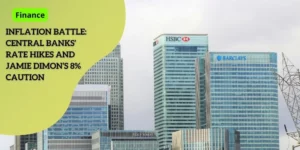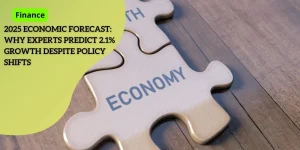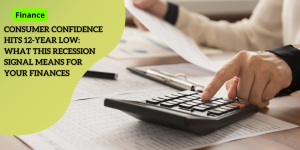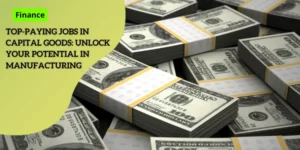Breaking Down the Fed’s Warning: Trump Tariffs and Their Direct Impact on Rising Prices
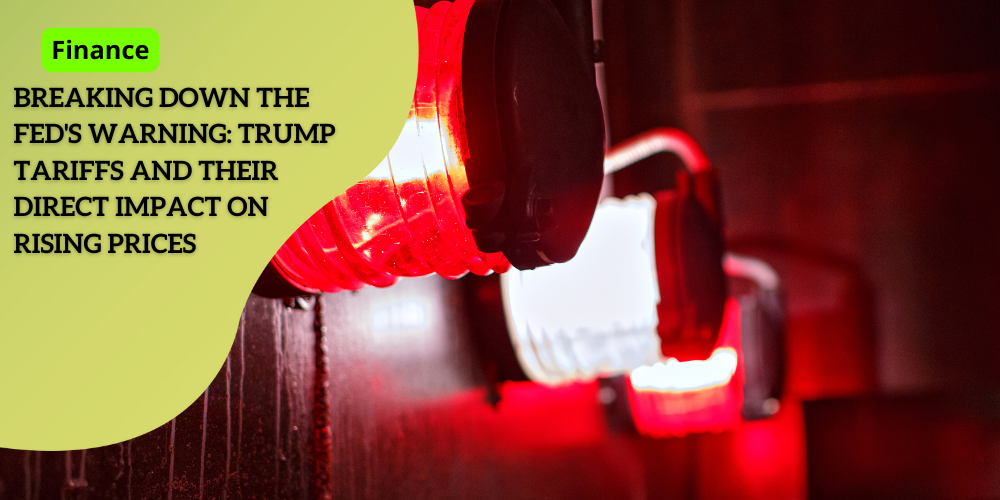
Understanding the Federal Reserve’s Latest Assessment
The Federal Reserve recently held its benchmark interest rates steady at around 4.3% while keeping a close eye on the evolving economic landscape.
This decision, though expected, underlines the Fed’s strategy to gauge the impact of various policies before making any further adjustments.
Interest Rates and Current Economic Conditions 
By maintaining the interest rate at 4.3%, the Fed aims to stabilize the economy amid increased volatility.
Chairman Jerome Powell has pointed out a direct relationship between President Trump’s tariffs and rising prices.
These tariffs, essentially import taxes, are contributing to inflation by increasing the cost of goods.
Powell stressed that even though the economy appears to be in decent shape, there is significant unease and a downturn in public sentiment.
The central bank has noted that growth expectations have been trimmed to 1.7%, a notable drop from the previous estimate of 2.1%.

Tariffs and Rising Prices 
Powell’s statements have been clear about the impact of tariffs. He acknowledged that tariffs are a critical factor driving price hikes.
This assessment is supported by Fed projections, which now expect inflation to hit 2.7% by the end of the year, up from an earlier forecast of 2.5%.
Adjusting Growth Forecasts 
The downward revision in growth forecasts signals the Fed’s concern over the economic impacts of the tariffs.
The uncertainty surrounding these policies is indeed creating headwinds for economic expansion.
The Fed is increasingly cautious, preparing for potential hits to growth and making substantial adjustments to its economic projections based on recent data.
Navigating Through Uncertainty 
Given this backdrop, the Fed has adopted a “wait-and-see” approach to monitor how economic conditions develop.
Powell noted that the economy could face a one-time jump in prices due to the tariffs rather than a prolonged period of high inflation.
The Federal Reserve’s strategic patience reflects their intent to avoid unnecessary disruptions while awaiting clearer economic signals.
The central bank remains poised to adjust its policies accordingly, including potential future rate cuts later in the year if growth shows signs of further weakening.
This chapter sets the stage for understanding the direct consequences of these economic policies on inflation and the resulting uncertainty, and it explains the Fed’s cautious yet adaptive stance.
The Direct Impact of Tariffs on Inflation 
| Aspect | Details |
|---|---|
 Tariffs Acting as Import Taxes Tariffs Acting as Import Taxes |
Tariffs act as import taxes, driving up prices for goods and services, with higher costs being passed to consumers. |
 Quoting the Inflation Projection Quoting the Inflation Projection |
The Fed revised the inflation projection to 2.7% by year-end, primarily due to tariffs affecting prices. |
 One-Time Price Jump vs. Sustained Increase One-Time Price Jump vs. Sustained Increase |
The Fed anticipates a one-time price surge, not a prolonged inflation increase, after initial adjustments to tariffs. |
Economic Complexity and Fed’s Strategy 
Given the complexity added by the tariffs, the Fed’s strategy includes tight monitoring of economic indicators.
The aim is to support the economy while mitigating the potential long-term impacts of tariffs.
This involves being ready to adjust monetary policy, including the possibility of cutting rates if economic growth appears to slow significantly.
By understanding the direct impact of tariffs on inflation, we can better appreciate the broader economic uncertainties and market responses.
This context sets the stage for exploring further strategies the Federal Reserve might adopt to maintain economic stability.
Economic Uncertainty and Market Response 
-
Market Turbulence
The economic policies driven by the Trump administration, particularly the tariffs, have resulted in clear market turbulence. -
These tariffs are essentially import taxes that directly contribute to rising prices, which was discussed in the last chapter.
-
While the Federal Reserve maintained the interest rate at 4.3%, the uncertainty these tariffs have introduced into the economic landscape has been palpable.
-
Public Sentiment and Business Concerns
The broader public sentiment has also taken a hit amidst this economic uncertainty. -
There has been a noticeable decline in consumer confidence, with many households now expecting prices to continue rising.
-
Such expectations can lead to behavior changes, such as accelerating purchase decisions, which can further drive up prices and complicate the Federal Reserve’s task of maintaining price stability.
-
This sentiment is crucial as it can significantly influence economic dynamics and the actual realization of inflation forecasts.
The business community has voiced more concrete concerns.
Business leaders are worried about how the tariffs and the resulting price increases might disrupt supply chains and profitability.
There’s a fear that sustained economic uncertainty could lead to reduced investment and hiring, which in turn would dampen overall economic growth.
Companies now face greater difficulty in planning for the future, increasing the overall risk for the economy.
Fed’s Adjustment Strategy 
Amidst these concerns, the Federal Reserve has adopted a strategic, wait-and-see approach.
By maintaining current interest rates, the Fed aims to monitor economic developments closely.
They have signaled that potential rate cuts could be considered by the end of the year if there is evidence of a more pronounced economic slowdown.
Additionally, the Fed plans to slow down the selling of assets, like government debt, signaling a shift towards providing more support for the economy.
This prudent strategy is intended to offer some stability to the markets while keeping options open for more significant interventions if needed.
The next steps by the Fed will likely be informed by how the economy responds to the ongoing policy adjustments and global economic conditions, keeping both growth and inflation targets in focus.
The Fed’s Strategic Response 
-
Adopting a Wait-and-See Approach
Amid market volatility and economic uncertainty, the Federal Reserve has opted for a cautious, wait-and-see approach. -
By holding the interest rates steady at 4.3%, the Fed aims to monitor how the economic landscape evolves in response to recent developments, including the impact of tariffs.
-
Fed Chairman Jerome Powell emphasized the importance of observing the unfolding economic conditions before making any significant policy changes.
-
This strategic patience is rooted in the desire to gather more data and clarity on the implications of tariffs on the economy.
-
Plans to Slow Asset Sales
To provide a buffer for the economy, the Federal Reserve has announced plans to decelerate its asset sales. -
Reducing the pace at which it sells assets, such as government debt, is intended to alleviate some of the financial strains and support economic stability.
-
This move signifies the central bank’s commitment to fostering a more favorable environment for growth amidst the prevailing uncertainty.
-
By easing the reduction of its balance sheet, the Fed hopes to avoid exacerbating the financial pressures that could arise from an aggressive policy stance.
-
Potential Rate Cuts by Year-End
Even though interest rates remain unchanged for now, the prospect of future rate cuts looms on the horizon. -
The Fed’s forecasts suggest that rate reductions could be a reality by the end of the year if economic conditions warrant such measures.
-
With growth projections revised downward to 1.7% from 2.1%, the central bank is prepared to intervene by lowering rates to stimulate the economy if it shows signs of significant slowdown.
-
The adjustment would aim to counteract the adverse effects of tariffs and other economic headwinds, ensuring that the economic momentum does not stall.
Transition to Future Considerations 
As the Federal Reserve adapts to the shifting economic dynamics, it remains vigilant in its mission to balance growth and price stability.
This adaptive approach reflects the complexities and multifaceted challenges the economy faces in the current climate.
By maintaining flexibility in its policy tools and proactively responding to emerging data, the Fed endeavors to navigate the economy through turbulent times while laying the groundwork for sustained long-term growth.
Long-term Implications and Policy Tensions 

The Federal Reserve’s recent economic assessment has highlighted an intricate balance of priorities that will shape the U.S. economy in the long term.
Despite short-term hurdles, the Trump administration continues to advocate for a positive growth outlook.
It is essential to dissect the potential long-term implications and evaluate the emerging policy tensions to understand the future trajectory of the U.S. economy.
Positive Long-Term Growth Outlook 
President Trump and his economic advisors remain optimistic about the country’s growth prospects.
They argue that the current economic policies, including tariffs, will lead to stronger, more resilient growth in the long run.
They believe these steps are necessary to correct trade imbalances and protect domestic industries, ultimately benefiting American workers and businesses.
This outlook persists despite the present turbulence and the immediate economic slowdown indicated by the reduced growth forecast of 1.7%, down from 2.1%.
Risk of Unanchored Inflation Expectations 
A significant concern for the Federal Reserve is the risk of inflation expectations becoming unanchored from the 2% target.
With tariffs driving up prices on imported goods, consumers and businesses are starting to anticipate higher prices in the future.
This expectation can be self-fulfilling; as individuals and firms act on these expectations, it may lead to actual price increases.
Lindsay James, an investment strategist at Quilter, notes that “inflation remains a primary risk and is showing signs of consumer expectations becoming unanchored from the 2% target”.
Such conditions complicate the Fed’s efforts to maintain price stability while also supporting economic growth.
Balancing Growth and Price Stability 
The Federal Reserve faces the ongoing challenge of balancing the dual mandates of fostering economic growth and ensuring price stability.
The central bank is committed to monitoring economic developments closely and adjusting its policies as needed.
The Fed’s cautious approach includes maintaining current interest rates while considering potential future rate cuts and slowing the pace of asset sales to sustain economic support.
By adopting a “wait-and-see” stance, the Fed aims to be prepared to respond to any further declines in growth or spikes in inflation.
This balancing act is made even more complex by the uncertainty surrounding tariff impacts.
While Fed Chairman Jerome Powell acknowledged tariffs as a clear factor in rising prices, he also stressed the importance of data and cautious policy adjustments.
The Fed’s incremental approach is crucial in navigating the delicate interplay between growth and inflation under current unpredictable economic conditions.
As we continue to observe the dynamics between policy measures and their economic consequences, it becomes increasingly vital to stay informed and understand the evolving challenges.
These insights will be particularly crucial as we delve deeper into the strategies and responses that the Federal Reserve may need to employ to maintain equilibrium in the coming months and years.

